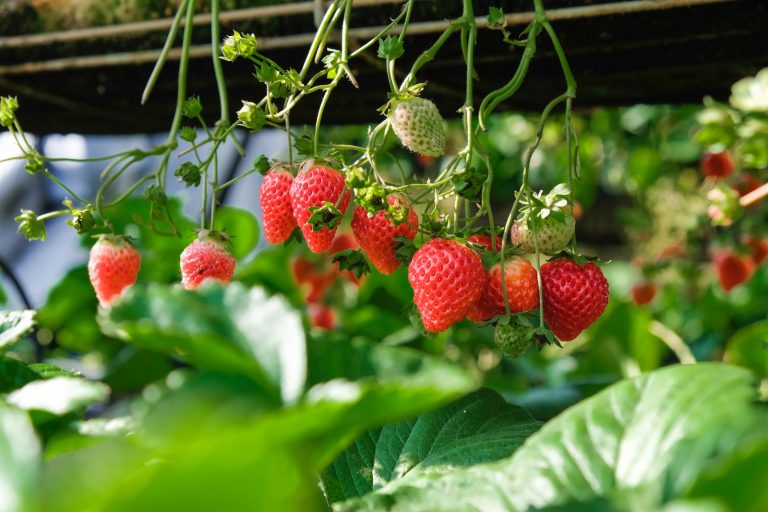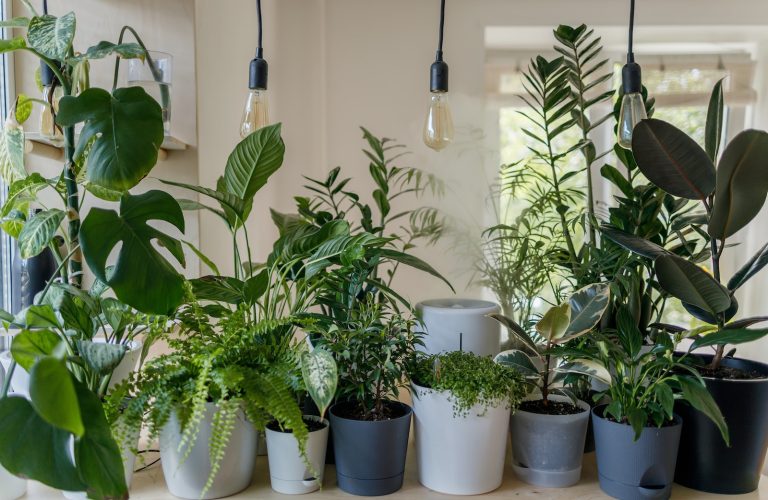How to Grow Cucumbers in Your Home Garden

Are you a fan of fresh, crunchy cucumbers but tired of paying premium prices for them at the grocery store? It’s time to start growing your own cucumbers in your backyard garden!
With a few simple steps and some TLC, you can have an abundant supply of delicious cucumbers that are perfect for salads or even making pickles. In this blog post, we’ll share our top tips on how to successfully grow your own cucumber plants from seeds right at home. Get ready to impress your friends and family with juicy, homegrown cucumbers that will take any recipe up a notch!
Introduction to Growing Cucumbers
Cucumbers are a refreshing, crunchy addition to any dish, and they’re incredibly easy to grow at home. With just a little bit of planning and care, you can enjoy fresh cucumbers from your own garden all summer long.
When choosing a cucumber variety to grow, there are two main types to choose from: slicing cucumbers and pickling cucumbers. Slicing cucumbers are the type you’ll find in the grocery store, and they’re perfect for eating fresh or adding to salads. Pickling cucumbers are smaller and have a slightly different flavor that is perfect for pickling.
Once you’ve chosen your variety, it’s time to start planting. Cucumbers can be grown in either raised beds or directly in the ground, but make sure you choose a spot that gets plenty of sunlight. Cucumbers need at least six hours of sun per day to produce well.
If you’re starting your cucumber plants from seed, plant them indoors about four weeks before your last expected frost date. Once they have germinated and grown a few inches tall, they can be transplanted outdoors. If you’re purchasing seedlings from a nursery, wait until after your last frost date to plant them outside.
Cucumber plants should be spaced about 18 inches apart, and they will need some type of support system as they grow. Cages or trellises work well for this purpose. As the plants start to produce fruit , make sure to keep the area around them weeded so they can get the most sun.
Finally, be sure to water your plants regularly and fertilize them every few weeks for best results. With proper care, you can harvest crisp cucumbers from your garden all summer long!
Preparation for Planting
- Clear out a large area in your garden that gets at least 6-8 hours of direct sunlight each day.
- Break up the soil in the area with a shovel or tiller, and remove any rocks or debris.
- Amend the soil with organic matter such as compost or well-rotted manure.
- Create raised rows or hills for planting, using about 2-3 times as much soil as you would for a flat garden bed. This will help improve drainage and prevent cucumber plants from getting too wet and developing diseases.
- Plant cucumber seeds or transplants in the prepared soil, spacing them about 12-18 inches apart in all directions. If you’re growing vining varieties, you’ll need to provide support for the plants to climb on, such as a trellis or fence
Planting the Seeds
To get started, you’ll need to purchase some cucumber seeds. You can find these at your local gardening center or online. Once you have your seeds, it’s time to start planting!
If you’re planting your cucumbers indoors, you’ll need to start them in pots or seed trays. Fill the pots with a good quality potting mix and sow the seeds thinly. Cover the pots with a lid or clear plastic bag to create a humid environment for the seeds to germinate. Keep the soil moist but not wet and place the pots in a warm spot out of direct sunlight.
Once the seedlings have emerged, thin them out so that only the strongest plants remain. When they are big enough, transplant them into larger pots or into your outdoors garden bed.
If you’re planting your cucumbers outdoors, wait until all danger of frost has passed before sowing the seeds directly into the ground. Prepare the soil by raking it over and digging in some compost or well-rotted manure. Sow the seeds thinly and keep them well watered until they have germinated. Thin out the seedlings as they grow so that only strong plants remain.
Cucumbers require a lot of space to grow so make sure you give them plenty of room in their final growing position. They also need support to climbing so provide some sort of trellis or framework for them to climb up on as they grow. With a little care and attention, your cucumbers will be growing in no time!
Watering and Maintenance
Cucumbers need a lot of water to grow well. Water them thoroughly at least once a week, and more often if the weather is hot and dry. If the leaves start to wilt, that’s a sign they need more water.
To keep cucumbers healthy, it’s also important to give them some nutrient-rich compost or fertilizer every few weeks. You can do this by side dressing the plants (adding compost or fertilizer to the soil around them) or using a liquid fertilizer.
Finally, cucumbers need to be harvested regularly. Pick them when they’re still small and tender for the best flavor.
Fertilizing and Treatment for Pests & Disease
Cucumbers are relatively easy to grow and don’t require a lot of special care. However, there are a few things you should keep in mind when growing cucumbers in your home garden.
- Fertilizing: Cucumbers are heavy feeders and will need to be fertilized regularly. A good rule of thumb is to fertilize every two weeks. You can use either a liquid fertilizer or a slow-release granular fertilizer.
- Pests and Disease: Cucumbers are susceptible to a number of pests and diseases. The most common include cucumber beetles, aphids, powdery mildew, and downy mildew. Fortunately, there are a number of ways to prevent or control these problems.
- Cucumber Beetles: Cucumber beetles are the most common pest of cucumbers. They can be controlled with row covers or by hand picking. Aphids: Aphids can be controlled with insecticidal soap or by releasing ladybugs into your garden. Powdery Mildew: Powdery mildew is a fungal disease that affects cucumbers and other plants. It can be controlled with sulfur-based fungicides or by using resistant varieties. Downy Mildew: Downy mildew is another fungal disease that affects cucumbers and other plants. It can be controlled with copper-based fungicides or by using resistant varieties.
Harvesting Your Cucumbers
Harvesting your cucumbers is a simple process that can be done by hand or with a cucumber picker. To ensure the highest quality crop, pick cucumbers early in the morning before the temperatures rise. Pick cucumbers that are 6-8 inches in length and have a deep green color. Avoid picking cucumbers that are yellow or have brown spots. Cucumbers can be stored in a cool, dry place for up to two weeks.
Alternative Ways of Growing Cucumbers
Cucumbers are a versatile vegetable that can be grown in a number of different ways. Here are a few alternative methods for growing cucumbers in your home garden:
- Grow cucumbers vertically on a trellis or other support structure. This will save space in your garden and also make it easier to harvest the fruits.
- Use containers or hanging baskets to grow cucumbers. This is a great option if you don’t have much space for a garden, or if you want to keep the plants away from other vegetables in your garden.
- Grow cucumbers in green houses or polytunnels. This type of controlled environment is perfect for cucumber plants, as it provides the warm temperatures and high humidity that they prefer.
- Try growing cucumbers hydroponically. This method doesn’t use any soil, so it’s ideal if you don’t have any space for an outdoor garden. Hydroponic systems can be complex, but they offer a high yield of cucumbers with minimal effort.
Conclusion
Growing cucumbers at home is relatively easy, and can be a great way to enjoy fresh produce during summer months. If you take the time to care for your plants correctly, it won’t be long until you’re able to savor your garden-fresh cucumbers. With these tips in mind, there should be no trouble at all when you are starting up your very own cucumber patch. Enjoy!

Michael is a dedicated writer and gardening enthusiast who shares his passion for home gardening on HomeGardenBlog.com. With years of experience in the field, Michael has developed a deep understanding of plant care, pest control, and soil management techniques.






